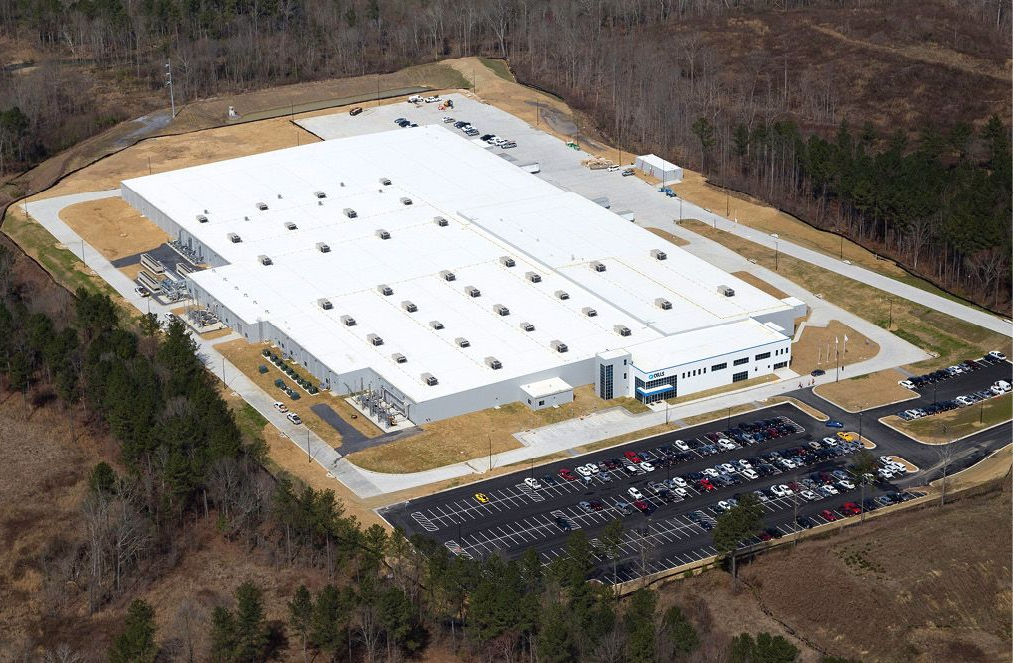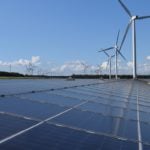Latest
The site will be monitored to assess methods of scaling up offshore floating PV. Image: SolarDuck.
European floating solar (FPV) company SolarDuck has installed an offshore FPV pilot site in the Dutch North Sea.
Alongside German energy company RWE, the 0.5MWp Merganser FPV site was successfully installed around 1.2km off the coast of Scheveningen in the Netherlands. The system consists of six floating platforms connected to a mooring system 20m below the surface, which SolarDuck said it intends to scale up. The platforms are connected and designed to “float several metres above the water, following the waves like a carpet.”
This article requires Premium Subscription Basic (FREE) Subscription
Unlock unlimited access for 12 whole months of distinctive global analysis
Photovoltaics International is now included.
Regular insight and analysis of the industry’s biggest developments
In-depth interviews with the industry’s leading figures
Unlimited digital access to the PV Tech Power journal catalogue
Unlimited digital access to the Photovoltaics International journal catalogue
Access to more than 1,000 technical papers
Discounts on Solar Media’s portfolio of events, in-person and virtual
Or continue reading this article for free
The Merganser project will be monitored remotely with over 180 sensors designed to track structural load, connector and mooring loads, and electrical performance, among other criteria. SolarDuck said the project had been developed to assess the “manufacturing, assembly, offshore installation and maintenance methodologies” necessary to achieve large-scale offshore FPV.
RWE and SolarDuck announced a joint venture to develop offshore solar R&D in March this year , alongside a number of other companies and bodies. In particular, the JV intended to develop an offshore PV site at RWE’s OranjeWind (Hollandse Kust West VII) offshore wind farm.
“Standalone or also in combination with offshore wind farms, offshore floating solar could open up further offshore renewable energy opportunities – especially for countries with lower average wind speeds but lots of sunlight”, said Sven Utermöhlen, CEO of RWE Offshore Wind. “With Merganser, we are gaining unique insights and first-hand experience in one of the most challenging offshore environments in the world.”
The North Sea also plays host to the Oceans Of Energy offshore FPV project, an EU Joint Industry Project between Oceans of Energy and 15 other European companies aiming to develop a 150MW standard format FPV system. Offshore FPV company SeaVolt has also launched a pilot project in the Belgian North Sea, with technology specifically designed for “harsh marine conditions”.
Last year, the Netherlands launched its first offshore FPV tender, seeking up to 100MW of capacity. The country has become one of the leading nations in Europe for the technology which, globally, is largely concentrated in Southeast Asia and China. Rystad Energy found that Southeast Asia – led by Indonesia, the Philippines and Thailand – was expected to add 300MW of FPV in “early 2024”.
China’s Ministry of Natural Resources, for its part, announced in April that offshore solar projects would be restricted to four “types” of sea areas: nuclear power plants’ thermal discharge areas, salt ponds and salt fields, sea aquaculture areas and offshore wind-solar sites.
Understanding PV module supply to the European market in 2025. PV ModuleTech Europe 2024 is a two-day conference that tackles these challenges directly, with an agenda that addresses all aspects of module supplier selection; product availability, technology offerings, traceability of supply-chain, factory auditing, module testing and reliability, and company bankability.
PV Tech has been running PV ModuleTech Conferences since 2017. PV ModuleTech USA, on 17-18 June 2025, will be our fourth PV ModulelTech conference dedicated to the U.S. utility scale solar sector. The event will gather the key stakeholders from solar developers, solar asset owners and investors, PV manufacturing, policy-making and and all interested downstream channels and third-party entities. The goal is simple: to map out the PV module supply channels to the U.S. out to 2026 and beyond.
Read Next
Dubai-headquartered renewable energy developer Jakson Green has signed a power purchase agreement (PPA) with the state-run utility National Hydroelectric Power (NHPC) for the output of a 400MW solar PV project in India.
Germany has awarded 512MW of capacity to solar-plus-storage projects in its most recent Innovation Auction.
The European Bank for Reconstruction and Development (EBRD) will provide up to US$229.4 million to ACWA Power to develop a 200MW/500MWh solar-plus-storage project in Uzbekistan.
A Lawrence Berkeley National Lab report has quantified the improving value of solar and wind power in the US.
Chinese module manufacturer Trina Solar has signed a collaboration agreement with IES-UPM to drive innovation in the solar industry.
New Green Power has announced an agreement to offer Google the rights to procure up to 300MW of solar power from its development pipeline.
Subscribe to Newsletter
Most Read
Features , Interviews , Long Reads
Upcoming Events
Sands Expo and Convention Centre, Singapore
San Francisco Bay Area, USA
https://www.pv-tech.org/solarduck-rwe-install-offshore-pv-pilot-in-dutch-north-sea/





